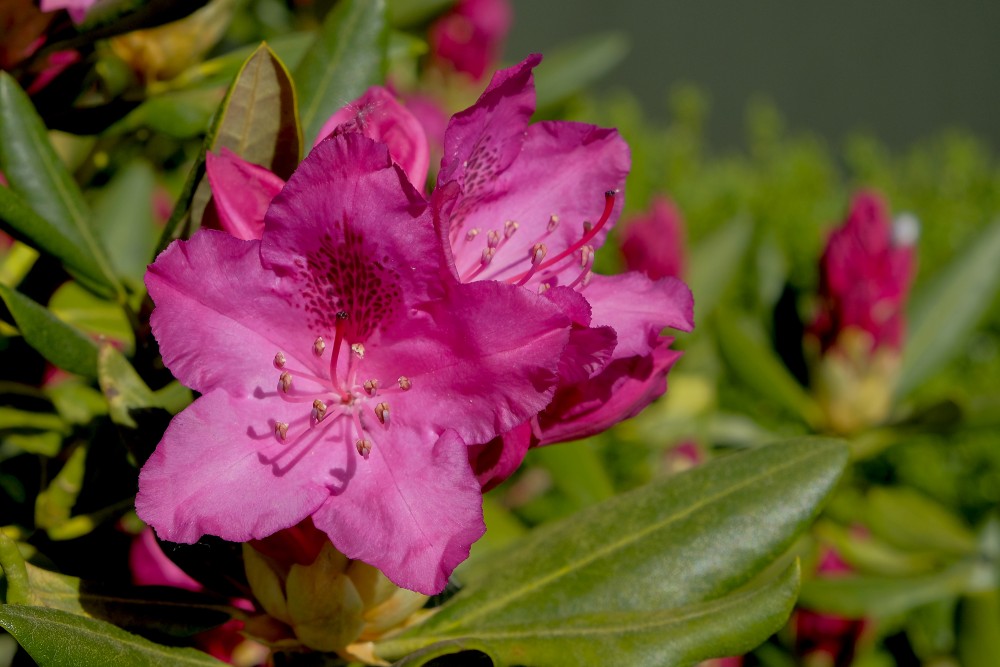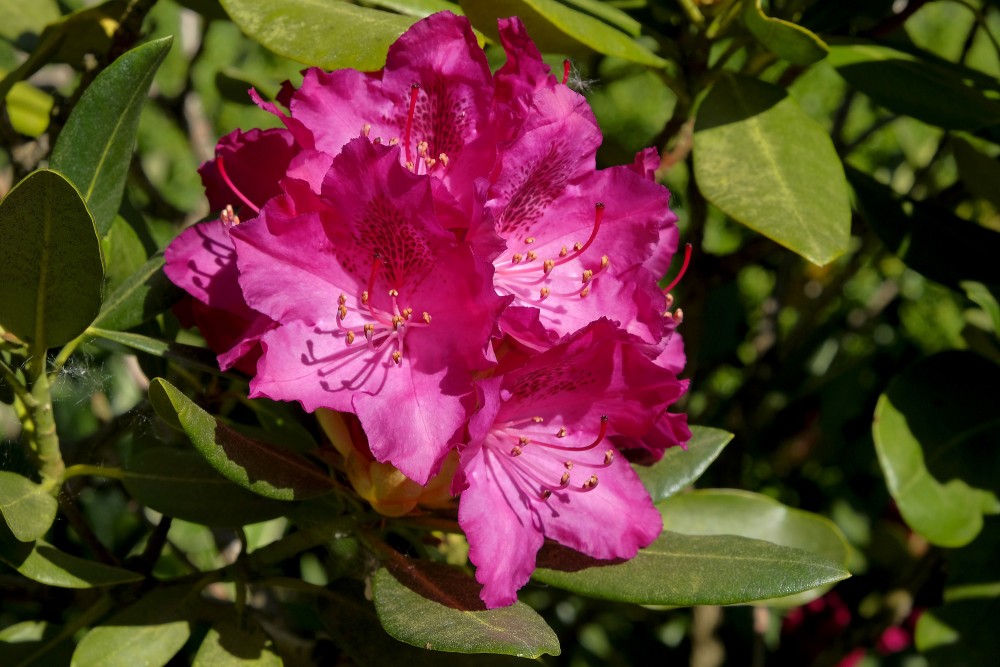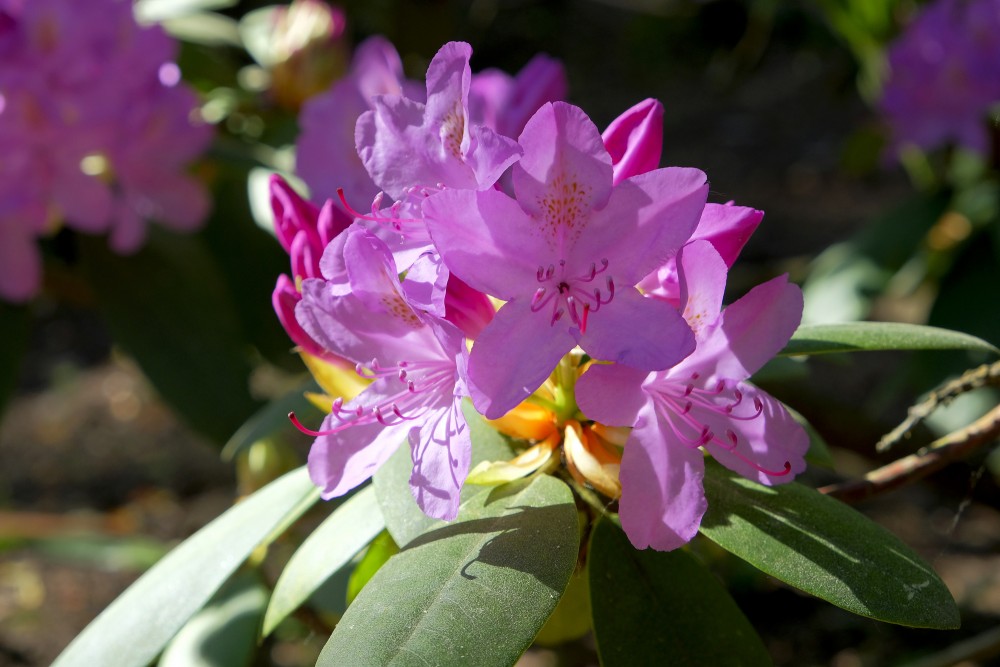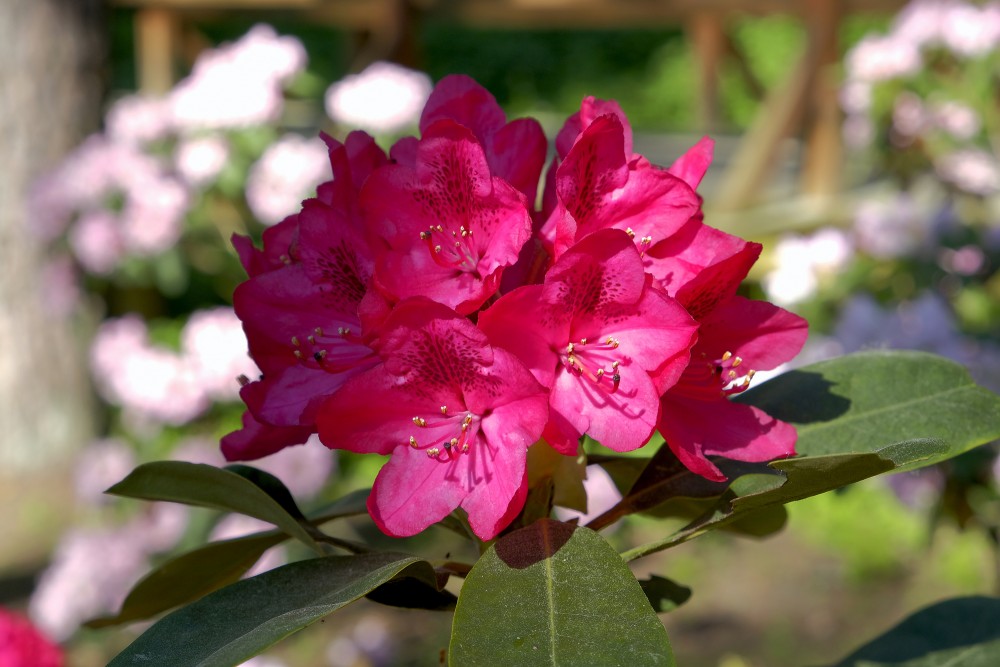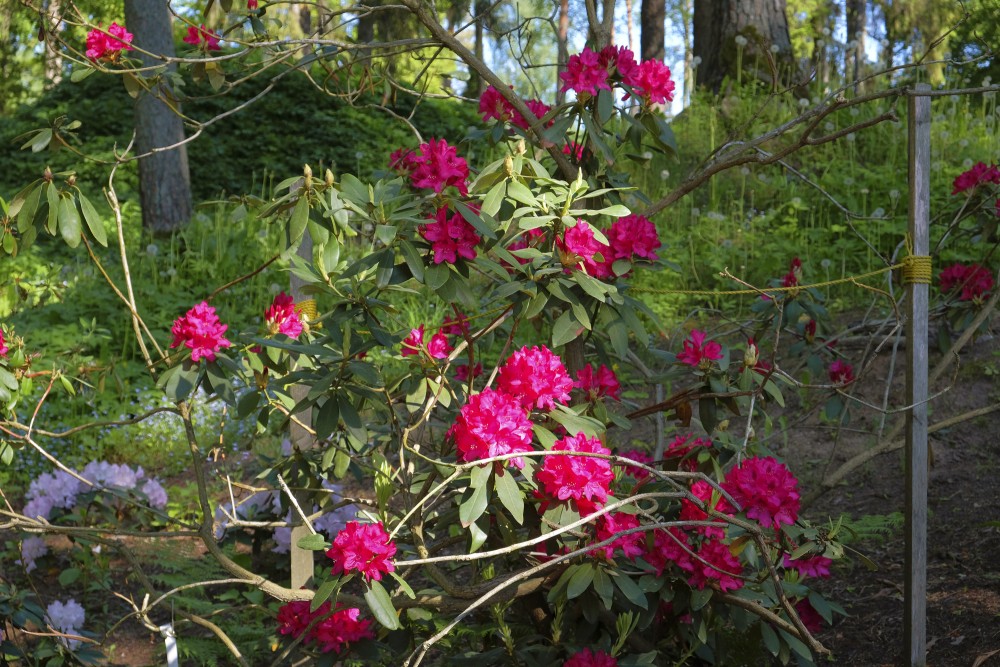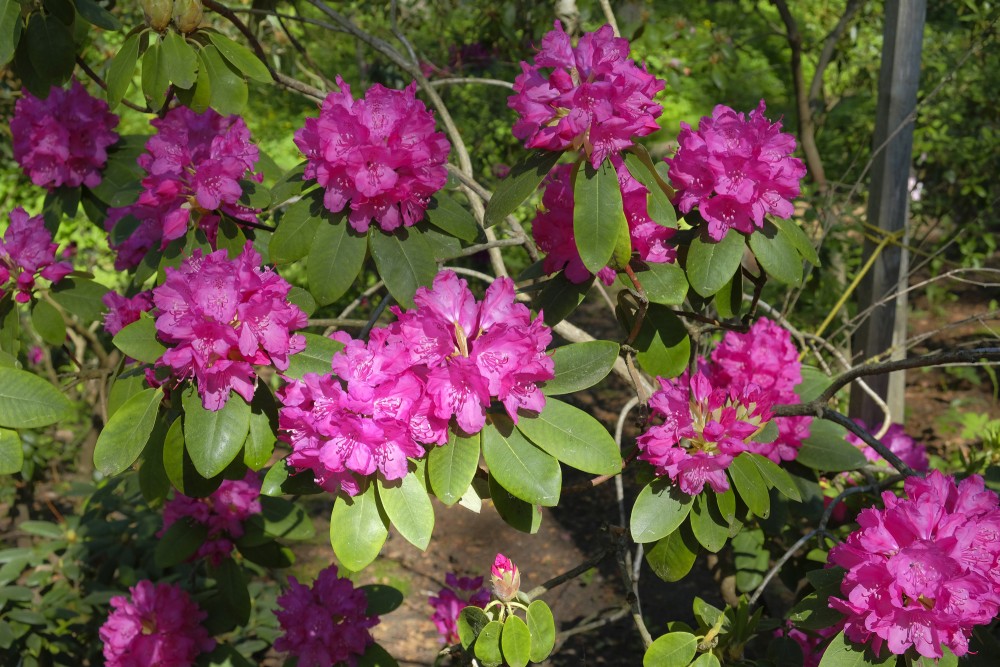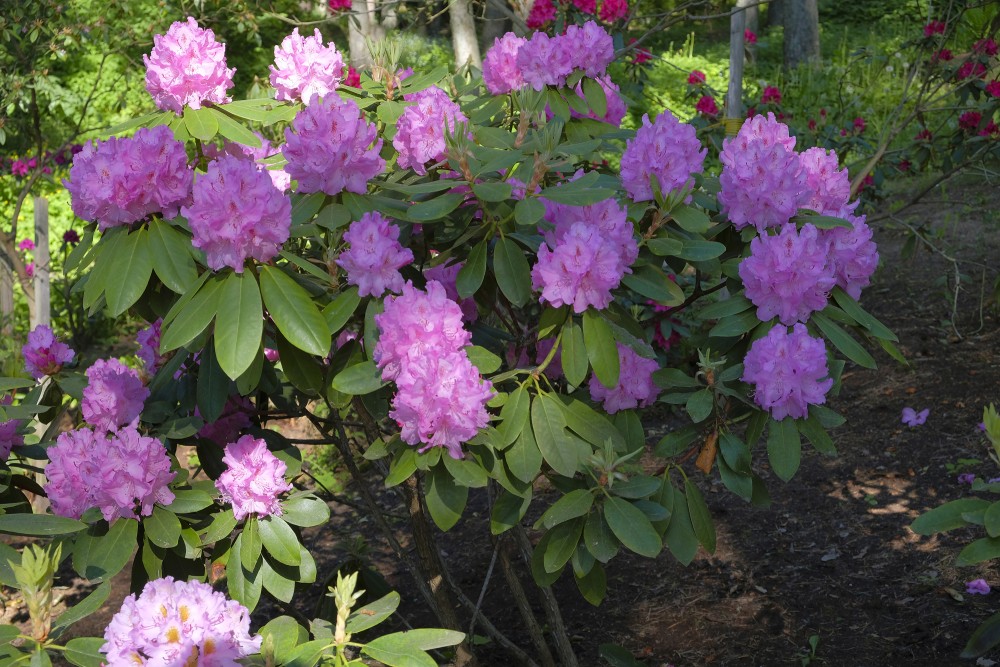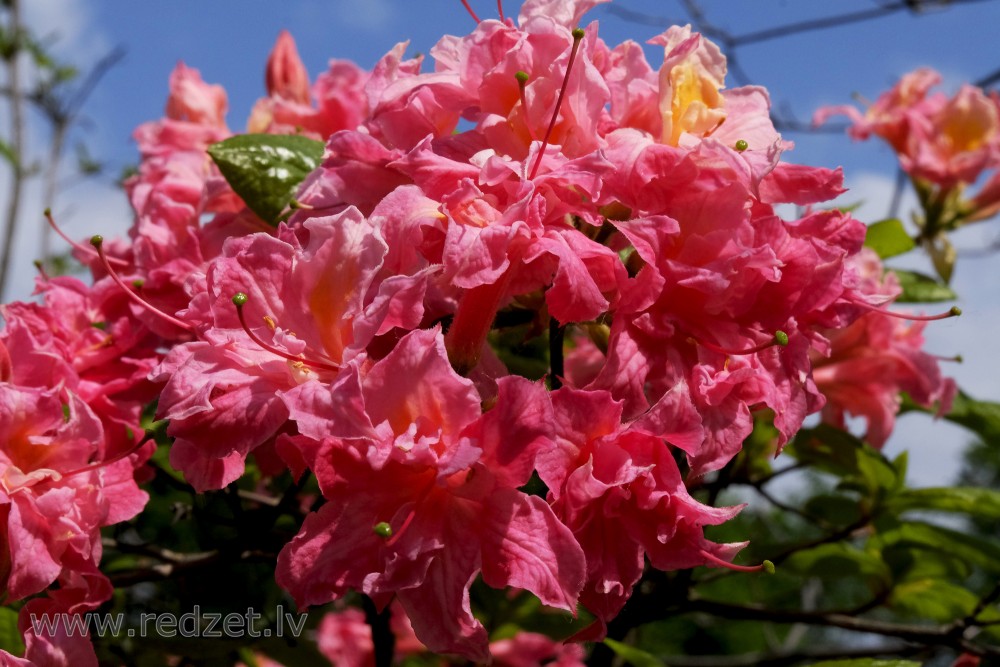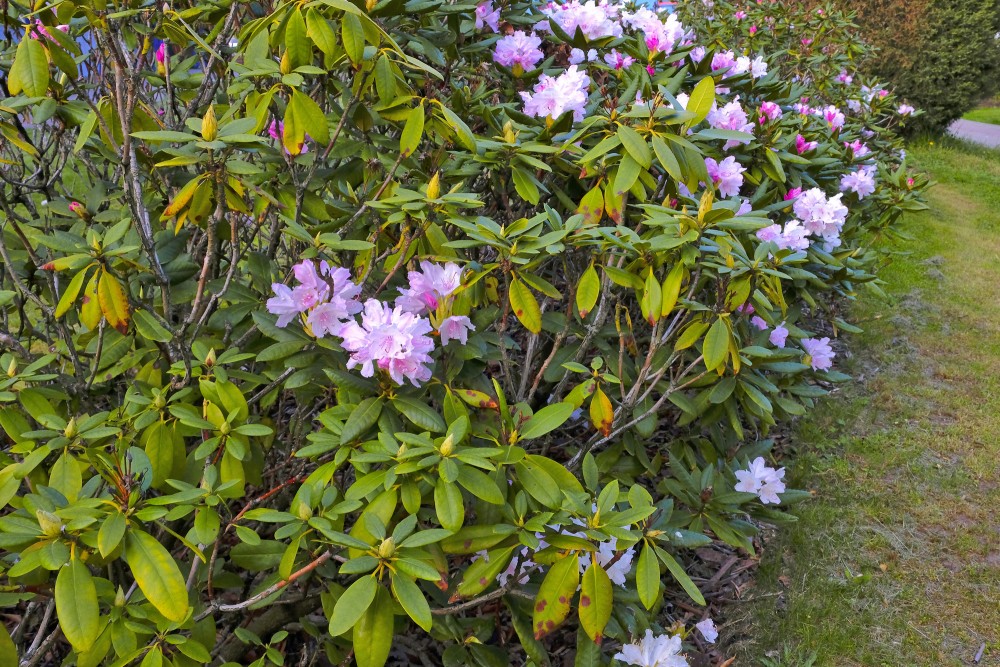Rhododendron
Rhododendron /ˌroʊdəˈdɛndrən/ (from Ancient Greek ῥόδον rhódon "rose" and δένδρον déndron "tree") is a genus of 1,024 species of woody plants in the heath family (Ericaceae), either evergreen or deciduous, and found mainly in Asia, although it is also widespread throughout the highlands of the Appalachian Mountains of North America. It is the national flower of Nepal as well as the state flower of West Virginia and Washington. Most species have brightly coloured flowers which bloom from late winter through to early summer.
Azaleas make up two subgenera of Rhododendron. They are distinguished from "true" rhododendrons by having only five anthers per flower.
| Rhododendron | |
| Kingdom: | Plantae |
| Clade: | Angiosperms |
| Clade: | Eudicots |
| Clade: | Asterids |
| Order: | Ericales |
| Family: | Ericaceae |
| Subfamily: | Ericoideae |
| Tribe: | Rhodoreae |
| Genus: | Rhododendron |
Description
Rhododendron is a genus of shrubs and small to (rarely) large trees, the smallest species growing to 10–100 cm (4–40 in) tall, and the largest, R. protistum var. giganteum, reported to 30 m (100 ft) tall. The leaves are spirally arranged; leaf size can range from 1–2 cm (0.4–0.8 in) to over 50 cm (20 in), exceptionally 100 cm (40 in) in R. sinogrande. They may be either evergreen or deciduous. In some species, the undersides of the leaves are covered with scales (lepidote) or hairs (indumentum). Some of the best known species are noted for their many clusters of large flowers. There are alpine species with small flowers and small leaves, and tropical species such as section Vireya that often grow as epiphytes. Species in this genus may be part of the heath complex in oak-heath forests in eastern North America.
They have frequently been divided based on the presence or absence of scales on the abaxial (lower) leaf surface (lepidote or elepidote). These scales, unique to subgenus Rhododendron, are modified hairs consisting of a polygonal scale attached by a stalk.
Rhododendron are characterised by having inflorescences with scarious (dry) perulae, a chromosome number of x=13, fruit that has a septicidal capsule, an ovary that is superior (or nearly so), stamens that have no appendages, and agglutinate (clumped) pollen.
Taxonomy
Rhododendron is the largest genus in the family Ericaceae, with as many as 1,024 species, (though estimates vary from 850-1000) and is morphologically diverse. Consequently, the taxonomy has been historically complex.
Distribution and habitat
Species of the genus Rhododendron are widely distributed between latitudes 80°N and 20°S and are native to areas from North America to Europe, Russia, and Asia, and from Greenland to Queensland, Australia and the Solomon Islands. The centres of diversity are in the Himalayas and Malaysia, with the greatest species diversity in the Sino-Himalayan region, Southwest China and northern Burma, from Himachal Pradesh, Uttarakhand, Nepal, Sikkim, Nagaland to northwestern Yunnan and western Sichuan and southeastern Tibet. Other significant areas of diversity are in the mountains of Korea, Japan and Taiwan. More than 90% of Rhododendron sensu Chamberlain belong to the Asian subgenera Rhododendron, Hymenanthes and section Tsutsusi. Of the first two of these, the species are predominantly found in the area of the Himalayas and Southwest China (Sino-Himalayan Region).
The 300 tropical species within the Vireya section of subgenus Rhododendron occupy the Malay archipelago from their presumed Southeast Asian origin to Northern Australia, with 55 known species in Borneo and 164 in New Guinea. The species in New Guinea are native to subalpine moist grasslands at around 3,000 metres above sea level in the Central Highlands. Subgenera Rhododendron and Hymenanthes, together with section Pentanthera of subgenus Pentanthera are also represented to a lesser degree in the Mountainous areas of North America and Western Eurasia. Subgenus Tsutsusi is found in the maritime regions of East Asia (Japan, Korea, Taiwan, East China), but not in North America or Eurasia.
Cultivation
Both species and hybrid rhododendrons (including azaleas) are used extensively as ornamental plants in landscaping in many parts of the world, including both temperate and subtemperate regions. Many species and cultivars are grown commercially for the nursery trade.
Rhododendrons can be propagated by air layering or stem cuttings. They can self-propagate by sending up shoots from the roots. Sometimes an attached branch that has drooped to the ground will root in damp mulch, and the resulting rooted plant then can be cut off the parent rhododendron.
Rhododendrons are often valued in landscaping for their structure, size, flowers, and the fact that many of them are evergreen. Azaleas are frequently used around foundations and occasionally as hedges, and many larger-leafed rhododendrons lend themselves well to more informal plantings and woodland gardens, or as specimen plants. In some areas, larger rhododendrons can be pruned to encourage more tree-like form, with some species such as Rhododendron arboreum and R. falconeri eventually growing to 10–15 m or more tall.
en.wikipedia.org
